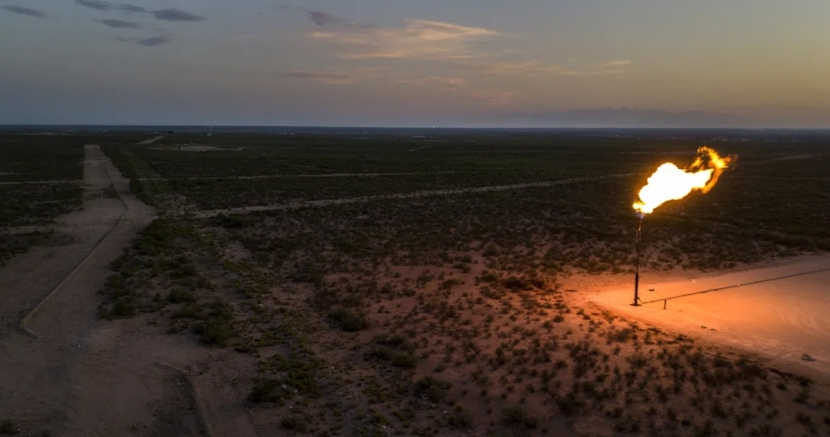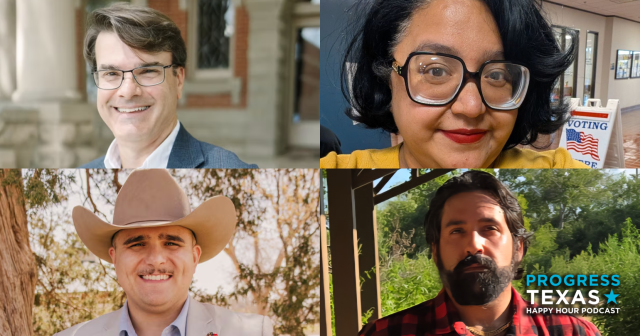From Standing Rock to the Texas Permian Basin

Toplines & Key Facts:
- Texas’ Big Bend is latest oil and gas frontline; national movement spans generations
- “It’s a shitshow”: no regulatory accountability and state-provided loopholes
- Cartels, poor health, and no potable water is our future
Our Environmental Movement is 150 Years in the Making
What do most people think of when referring to nature? In Texas, with the public only having access to about five percent of land, that question is answered differently in comparison to many other states. In much of the west, the answer is unequivocally National Parks, the birthplace of our country’s environmental movement. A former Park Director, George Hartzog, once said of Stephen Mathers, the first director of the National Parks, that Mathers believed in order to commit someone to nature’s worth, their own health, and one’s need to preserve it, we must, “go show it to them, because you don't get anywhere just telling them about it.”
Rio Grande River in Big Bend National Park/ 📷 Sierra Club
As a resident of Far West Texas, I know a thing or two about wilderness and how urban friends’ views can be changed in just one visit. There are stark differences to mountain sky islands like the Big Bend as opposed to Coyanosa, a once thriving agricultural community, beautiful in its own right, that has now become another victim to big oil and gas. Similar communities might be making big money for some of the largest corporations in the world, but their long-time residents are struggling with dwindling water supplies and toxic air quality contaminated by fracking and flaring. This is your last chance to taste a Pecos cantaloupe, enjoy hikes where you might see a friendly black bear in thickets of Texas Aspen trees, or “get lost” in the untouched landscapes to the south and west of tycoon skyscrapers in Midland.
Waha Gas Plant, Coyanosa/ 📷 CBS7
The Last Frontier Fighter
Lori Simmons is a modern day environmental justice fighter. She found her passion at Standing Rock, running supplies to the frontline of America’s most watched stance against climate change in recent decades. Today, Lori feels at home in the wild of the Big Bend, saying, “I came back to this region because I saw what the industry was doing to untouched landscapes and Balmorhea State Park.” Lori protects those upstream, and has the potential to help stop the pollution and pipelines that run to the ocean.
Simmons works for the Property Rights Pipeline Center, which educates landowners on their private property rights and connects them with attorneys who can help protect them from abuse by pipeline companies. When Lori first entered the community of Van Horn, where a high intensity methane (LNG) pipeline is expected to be built one mile from downtown, many residents thought she was for the pipeline and were ready to tear her apart. This community had a Texas Railroad Commission (the state’s energy regulatory agency) rubber stamped project placed upon them with the bare minimum federal public notices in English, when 89% of the population speaks Spanish. If the pipeline fails, it could cause a massive explosion. Van Horn and some of Interstate 10 might just be blasted away.
HIFLD, U.S. Department of Homeland Security
Future Oil and Gas Production Isn’t Just Destroying Our Climate
The Saguaro Pipeline is just the latest project to be forced upon the people of Texas in the name of eminent domain and the “public interest.” Pipeline companies say they bring jobs, but we know this is typically in the form of short term construction with little tax or economic benefits to the community. When you look at a map of pipelines in the state, you can see it’s crowded going east from the Permian Basin, but because of roadblocks going west to the Pacific, including New Mexico, California, and even Arizona’s more strict regulations, along with tribal lands in industries’ way, companies like OneOK are looking for another mechanism to roll in windfall profits. Simmons says, “Companies are looking for the easiest way to get their fossil fuel products to Asian markets and isolated West Texas and Mexico to the south are deemed the path of least resistance.”
From Guadalupe Mountains National Park/ 📷 Reagan Stone
This isn’t stopping residents from taking action. After the monumental movements against the now constructed Trans-Pecos Pipeline, even spurring a documentary, locals have found new confidence in community action. A local sheriff in Hudspeth County (Van Horn) has even gone to great lengths to note that the Saguaro would bring increased cartel action along the border as well as threaten a drying Rio Grande River with further pollution, deepening a regional water crisis all the way to the Rio Grande Valley. In a recent conversation, Simmons continued speaking on the Permian Basin’s high risk of oil and gas health impacts including cancer and asthma, “If I poisoned someone or spoiled a sacred place like wilderness, a park, or native burial, I go to jail; why are we not holding companies and those elected to protect us accountable?” On a clear night, sitting below the tallest peak in Texas, at Guadalupe Mountains National Park, you can see for yourself a vast network of lighting and flaring gas towers below. Like Mathers said, this is your invitation to see it for yourself. Wishing you safe travels.
Learn more about the LNG apparatus in Texas. Watch Progress Texas’ Climate Justice Town Hall
Love Texas beaches too? The Rio Grande Valley is the last unspoiled coastline in Texas
Are you a property owner fighting eminent domain? Contact the Property Rights Pipeline Center
DONATE
Your donation supports our media and helps us keep it free of ads and paywalls.








